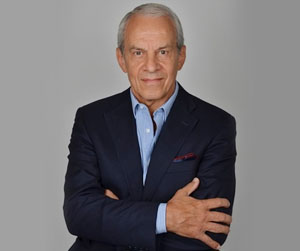Peeling
The aim of a peel is to improve the appearance of the skin by restoring radiance to the complexion and erasing superficial skin imperfections such as wrinkles, scars (caused by acne, chickenpox, accidents, etc.), pigment spots and keratosis patches. At the same time, it stimulates cell regeneration to slow down natural skin ageing.
The treatment consists of different levels epidermis abrasion and can be carried out by different means:
-
Mechanical: dermabrasion using an abrasive instrument;
-
Chemical: using a product causing abrasion, removing and regenerating the upper part of the epidermis;
-
Thermal: laser treatment.

Treatment of marks and rosacea with a laser after a cervico-facial lift and injecting hyaluronic acid into wrinkles
Uses
Depending on the skin imperfections that need to be treated and how deep these are in the epidermis, we can use a peel with a light, medium or deep level of action.
The different peels I use are:
-
The fruit acid peel (glycolic acid): a superficial peel that gives a shine to the complexion without causing scabs or excessive redness and without affecting your social activities.
-
Peeling using trichloroacetic acid (TCA) which, gives a light, medium or deep peel depending on its concentration.
-
Peeling using phenol and croton oil, which gives a deeper peel and stimulates significant cutaneous regeneration. This has specific precautions for use.
-
A laser peel: this is effective because the intensity of the peel is effectively controlled by the machine setting. Chemical peels are more difficult to control due to variable skin permeability, depending on the chemical peeling agent used.
-
Mechanical dermabrasion peeling: this is the oldest peeling technique. The skin is infiltrated with saline and anaesthetic and rubbed using an abrasive surface.
The choice of peel will depend on the imperfections to be treated and your skin type and quality:
-
For the complexion: To give you a radiant complexion, we prefer to use fruit acids with sessions spaced 15 days apart and an average of 4 sessions.
-
For pigment spots: I treat these with a laser.
-
For wrinkles and when treating the whole face, I use a laser or trichloroacetic acid.
-
To treat wrinkles on the lips and creases around the mouth, I use dermabrasion.
-
For the wrinkles on the eyelids, I use a phenol peel and croton oil.
-
For scars: I use dermabrasion.
-
For patches of keratosis: I use a laser.
I will recommend the type of process we should use and this choice will be made on a case by case basis.
Consultation
During the first consultation, it is essential that you express freely what bothers you and what you expect to improve. Do not be afraid to expose all your questions, fears and expectations. Everyone is different in morphology and psychology, expectations are not the same so there is no standard.
After you have explained your motivations, I will examine you and offer one or more solutions, taking into account your expectations, your anatomy, respecting your identity and the harmony of your physique.
So you can visualise the desired result, I will show you photos of surgical results from cases similar to yours to enable you to understand the objective of the intervention.
It is essential that you and I have a good understanding when deciding to operate and to determine the technique to use from among those I can offer.
I will then give you all the information on the techniques proposed along with the information sheets from the Société Française de Chirurgie Plastique Reconstructrice et Esthétique (French Society of Plastic, Reconstructive and Cosmetic Surgery) as well as a detailed estimate of the costs for the options chosen. You will then be able to move your project forward and get ready for a second consultation when you will be able to ask any additional questions to help you make a decision and prepare for the operation.
The treatment
The treatment is carried out in the medical centre and you do not need to stay in hospital.
Before treatment, I will go over the exact objective that we agreed during the consultation. You can then always make recommendations or ask any question. Then, if necessary, I will draw marks on your skin to guide the treatment.
In principle, you will not need an anaesthetic. However, some types of peeling may require a local anaesthetic.
Treatment time is approximately 30 minutes.
At the end of the treatment, for very superficial peels, no dressing is needed; for deeper peels, a moisturising and protective absorbent dressing is applied.
For all treatments, you can go home straight away possibly wearing a simple pair of sunglasses as protection and a scarf around your face.
After treatment
After light, very superficial peels with glycolic acid:
Your face is not marked and your skin will peel slightly, with possibly a little redness lasting for a few days. You can cover this with make-up. There is no pain and you can resume your normal social life on the same day.
Care
Use a simple moisturiser.
Recommendations
-
Exposure to the sun: if you do not have any marks, exposure to the sun is possible immediately using a sun protection cream with a maximum sun protection factor. If you have marks, no direct exposure to the sun should occur before these have totally disappeared.
-
Make-up: you can wear make-up on the same day of treatment using your normal products.
Medium and deep peels
Treatment will cause redness, swelling and oozing and your skin will peel and form scabs, requiring several days of care at home using oily substances and dressings.
Any swelling will take a few days to disappear; redness can last for several weeks but it is possible to mask this with foundation make-up.
Care
Preventing scabs from forming can be ensured by hydration and applying oily products. When the skin has regenerated, simple moisturisers and sunscreen will be sufficient.
In the days following treatment, anti-herpetic and anti-pruritic analgesic treatments may be needed.
Recommendations
-
Exposure to the sun: if you do not have any marks, exposure to the sun is possible straight away using a sun protection cream with a maximum sun protection factor. If you have marks, no direct exposure to the sun should occur before these have totally disappeared.
-
Make-up: you can wear make-up on the same day of treatment using your normal products.
For medium and deep peels, you will need to attend a check-up after about one week following the treatment, then after 15 days and 1 month.
The result
For light peels: Improvement is immediately visible, the complexion is more even and radiant and you can resume your social life on the very day of treatment.
For medium and deep peels: Improvement is visible only after the area of epidermis that was abraded has naturally peeled off and after the period of swelling and oozing is over, a few days after treatment. This takes 3 to 10 days depending on the depth of the peel.
There is an improvement in skin imperfections, the complexion is brighter and more even and the skin smoother, giving a rejuvenating effect and good tone.
The effects of the peel can be maintained using prescription cream, which will complete the peeling process over the following months. Even so, another peel may be recommended. The level of this will depend on your individual case and needs. Light peels can be repeated after a few months but medium and deep peels are not repeated until a year has passed.
When pigment spots are thoroughly erased by peeling, to stop these coming back, it is important to limit exposure to the sun and regularly apply a sun block cream.
For scars and wrinkles, you may need to supplement the result of the peel with filler injections (fillers).
Risks and complications
Price range
The cost of the operation will depend on the procedure to be carried out, the duration of the operation, the type of anaesthetic and any hospital charges.
If the reason for the operation is purely aesthetic, you may not be reimbursed by Social Security.
A detailed estimate is given to you during the first consultation following the options you have chosen. You then have a minimum legal period of 15 days to consider your options and move your project forward.
The first consultation costs €50. The follow-up consultations before and after the operation are free.
The photographs on this page are to illustrate and complete the information given on the operations. They are merely for information purposes so you can see the goals, results and scars from the operation.
The likelihood of scarring and each patient’s individual anatomy are different. For this reason, therefore, the photographs on this site do not commit Dr. Benelli to providing all patients with a similar result.
The information given on a site is not sufficient in itself and a medical consultation is essential to get the right information for each individual case. For this, you will need to consult a surgeon qualified in Plastic Reconstructive and Aesthetic Surgery.



